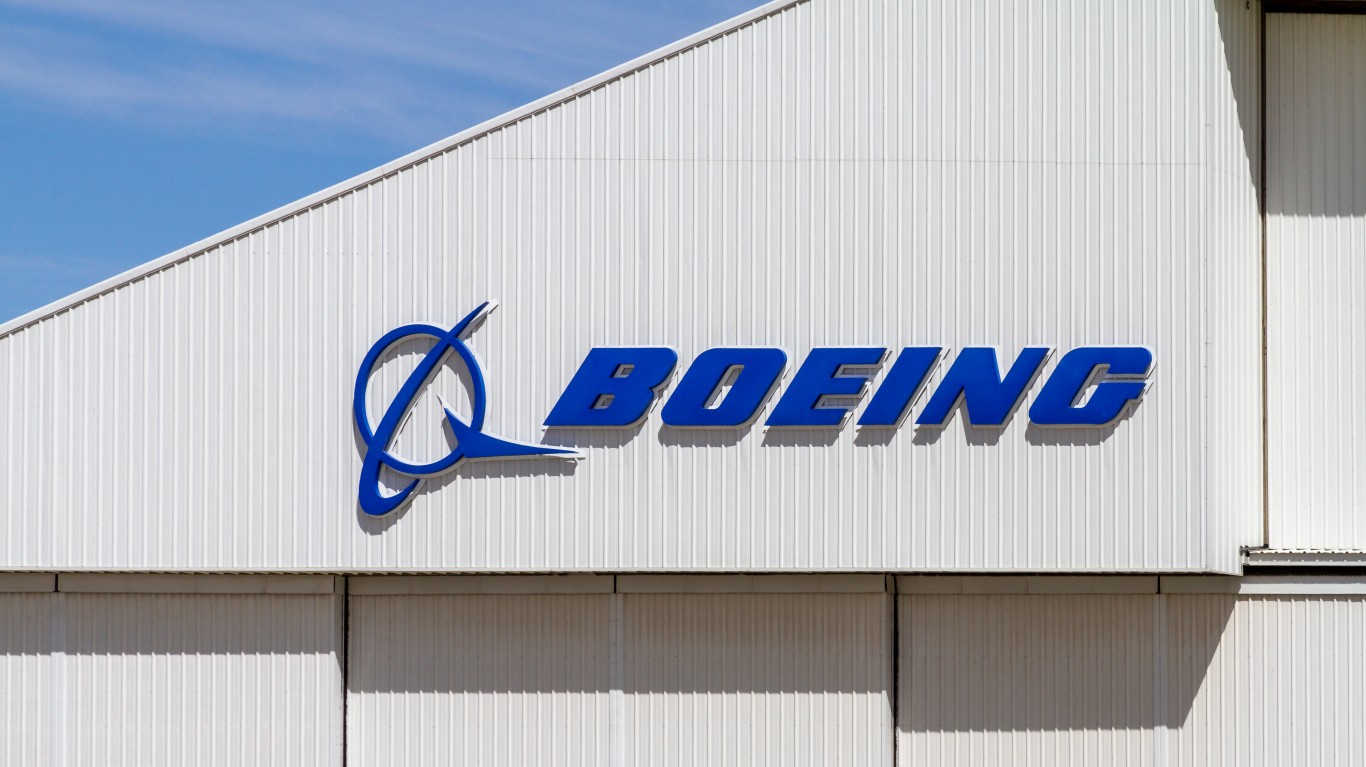
Boeing Co. (NYSE: BA) remains the worst-performing stock in the Dow Jones industrial average by far. The aerospace company has faced a rough year between the COVID-19 pandemic and the grounding of its 737 Max following crashes in 2018 and 2019. The question remains, has Boeing stock bottomed and can it recover from here?
Year to date, Boeing’s stock price is down 55.2%, vastly outpacing the rest of the DJIA. For comparison, the next worst Dow stock is Exxon Mobil (NYSE: XOM), which is down 34.8% so far this year. Boeing shares also rank among the bottom 25 companies in the S&P 500 in this time as well. As a result, analysts have cut their price targets for the stock.
The airline industry was one of the hardest hit by the COVID-19 pandemic. Commercial airplane passenger traffic went into a tailspin, and recovery is uncertain at this point. Industry research firm OAG has noted that 213 airlines are currently operating at less than a full schedule. At the same time, about 10,000 routes are also still off the board.
While the outlook may not be great, OAG also noted that demand for air travel has started to pick up. Filled passenger seats are now “just” 73% below their level a year ago. More than 30 million passengers flew last week, compared with 113 million at the same time last year.
Prior to the pandemic, Boeing faced issues in regards to its 737 Max. Two fatal crashes in Indonesia and Ethiopia killed 346 people and led to a global grounding of Boeing’s best-selling plane. The company has not delivered a new 737 Max since March 2019.
Maxing Out
Boeing has over 400 undelivered 737 Max jets sitting in storage. Even though the company has restarted its production line for the single-aisle plane, roughly 250 orders have been canceled. Boeing has an order backlog above 4,000, but as it stands now it will take at least a couple of years to clear through this undelivered inventory as production resumes.
A single-aisle plane from rival Airbus, the A321, seems to have overtaken Boeing’s 737 Max. Furthermore, a version of the Airbus jet, the A321XLR, likely has put an end to Boeing’s plans for a plane called the New Midmarket Aircraft (NMA).
The NMA was expected to be a dual-aisle plane with a capacity of between 220 and 270 passengers capable of flying routes of up to 5,000 miles. This would reportedly have occupied the same position in Boeing’s product line as the 757 jet before production of it ended in 2005.
View From the Top
Whatever the prospects for the NMA, Boeing will ultimately need a replacement for the 737 Max, and may opt for a clean-sheet design. In the meantime, the 737 Max is integral to getting Boeing back on track, and no one knows that more than David Calhoun, Boeing’s CEO. Calhoun has commented again and again that he is confident that the 737 Max is an important part of the company’s future.
In the past, Calhoun has laid the blame for the 737 Max crashes on his predecessor. At that time, Calhoun was working to fix relationships with the airlines, win over international regulators, and appease the current administration on the domestic front. The crashes were a public relations disaster and led to investigations that uncovered problems with the Max’s automated flight controls, as well as systems and manufacturing defects.
Boeing’s previous CEO, Dennis Muilenburg, was fired in December 2019 after a series of blunders occurred on his watch, culminating in the shutdown of 737 production.
Calhoun formally took over the company in January but he has been on the board of directors since 2009.
The coronavirus pandemic exacerbated the situation with the 737 Max jets. Boeing announced back in March that it had to shutter its major manufacturing plants outside of Seattle, Columbus, Philadelphia and Charleston. It also doesn’t help that airline traffic is only a fraction of what it was at the start of the year. Ultimately, Boeing’s well-being depends on a recovery in air traffic.
Calhoun has previously commented, “Traffic levels will not be back to 100%. They won’t even be back to 25%. Maybe by the end of the year we approach 50%.” A long-term recovery for Boeing seems plausible as more people get back to flying, but it will be a long road back.
The entire situation is very serious. “The threat to the airline industry is grave,” Calhoun noted. “There’s no question about it. And apocalyptic does actually accurately describe the moment.”
While Boeing waits for commercial airplanes to start moving again, its defense business is holding its own for now. Again, with Boeing stock incredibly depressed and a near-term recovery not likely, management will have to shift its focus in order to make things work going forward.
Find a Qualified Financial Advisor (Sponsor)
Finding a qualified financial advisor doesn’t have to be hard. SmartAsset’s free tool matches you with up to 3 fiduciary financial advisors in your area in 5 minutes. Each advisor has been vetted by SmartAsset and is held to a fiduciary standard to act in your best interests. If you’re ready to be matched with local advisors that can help you achieve your financial goals, get started now.
Thank you for reading! Have some feedback for us?
Contact the 24/7 Wall St. editorial team.